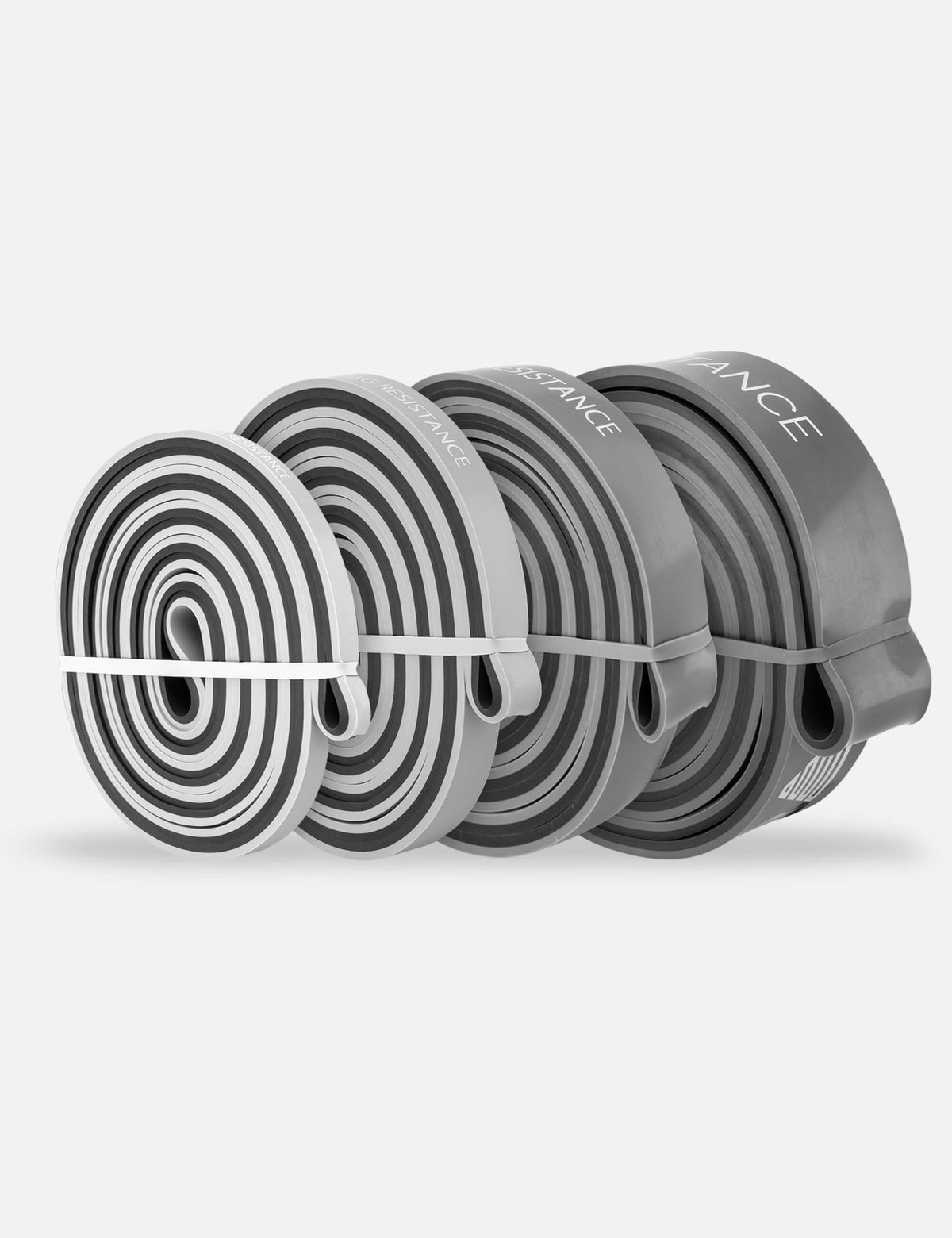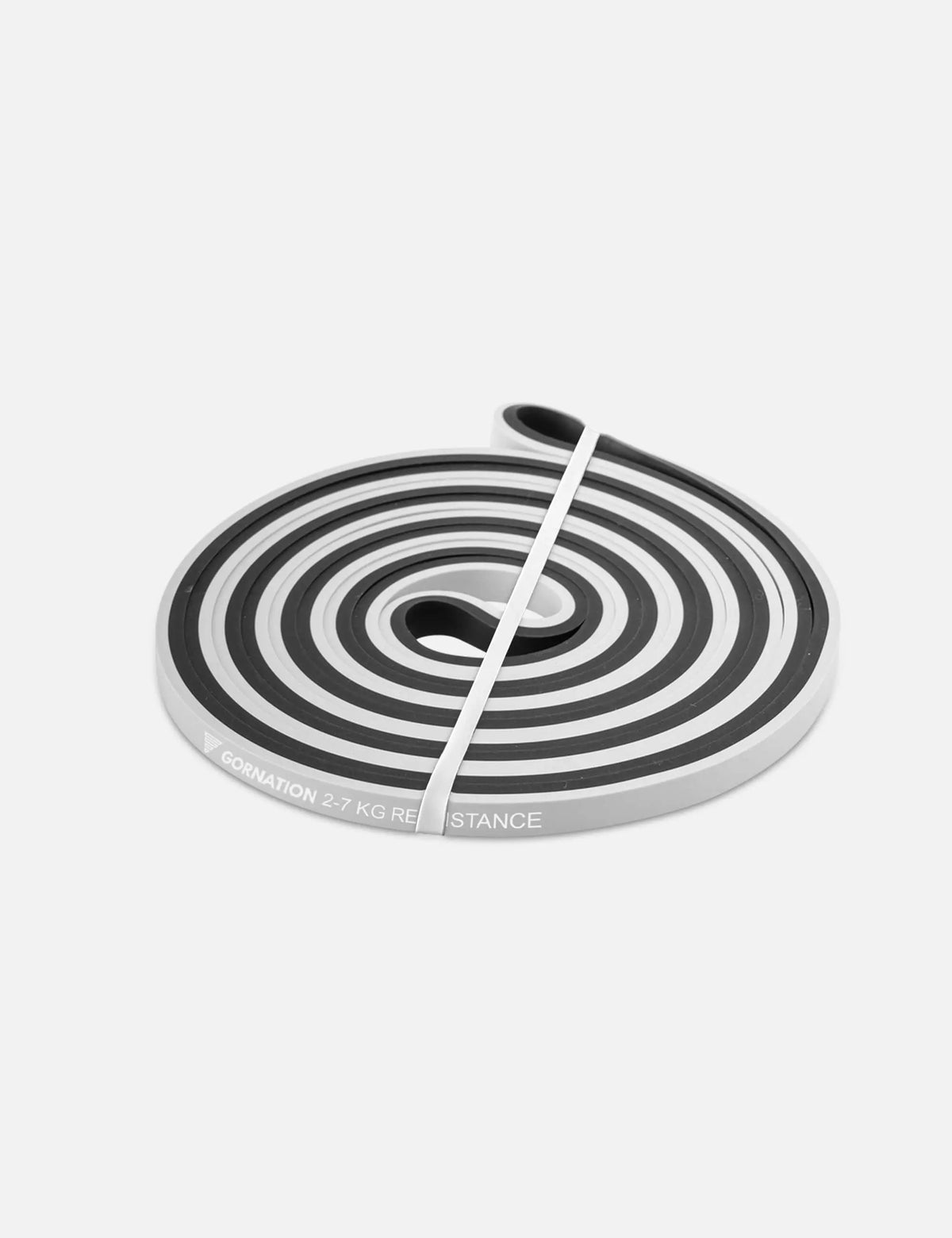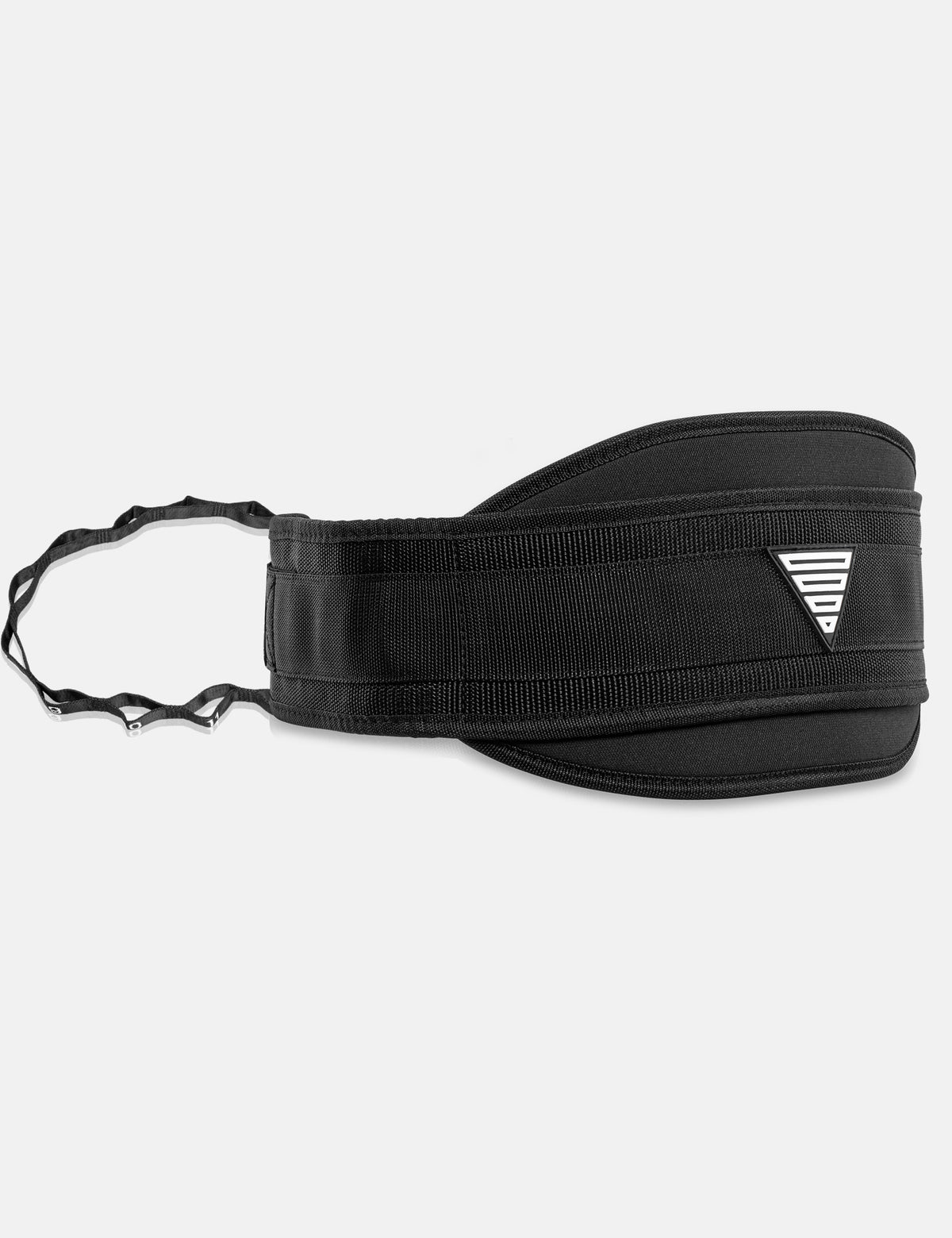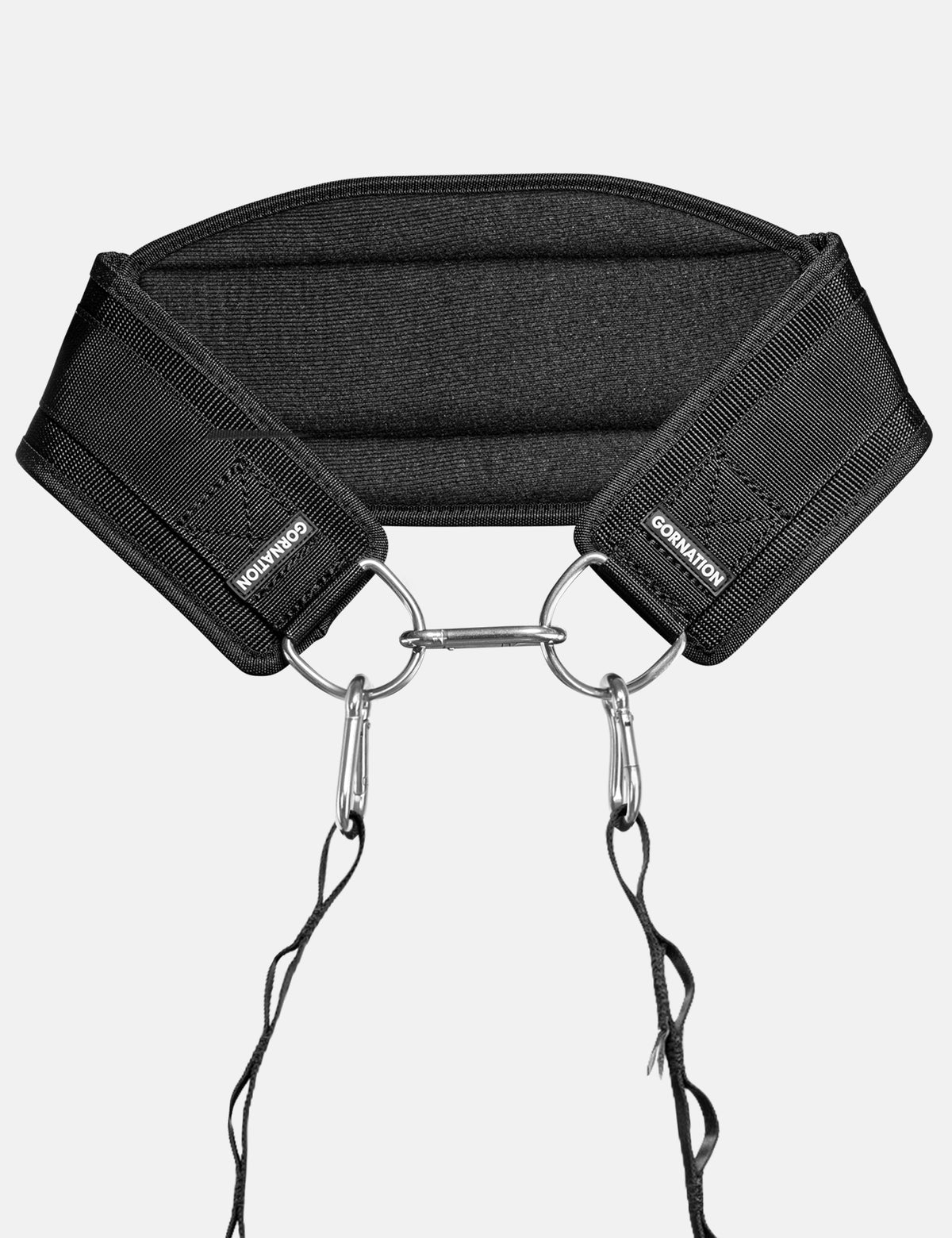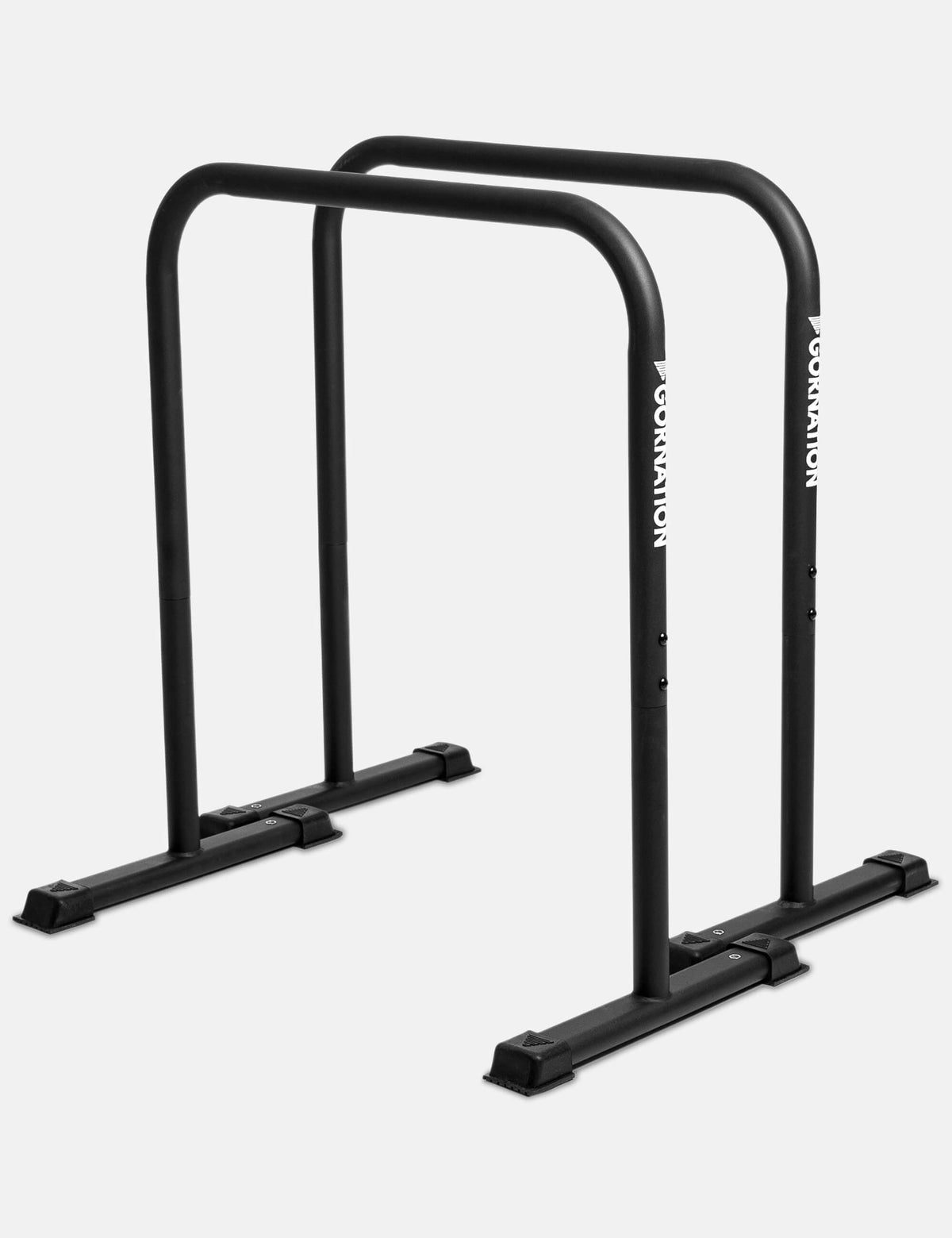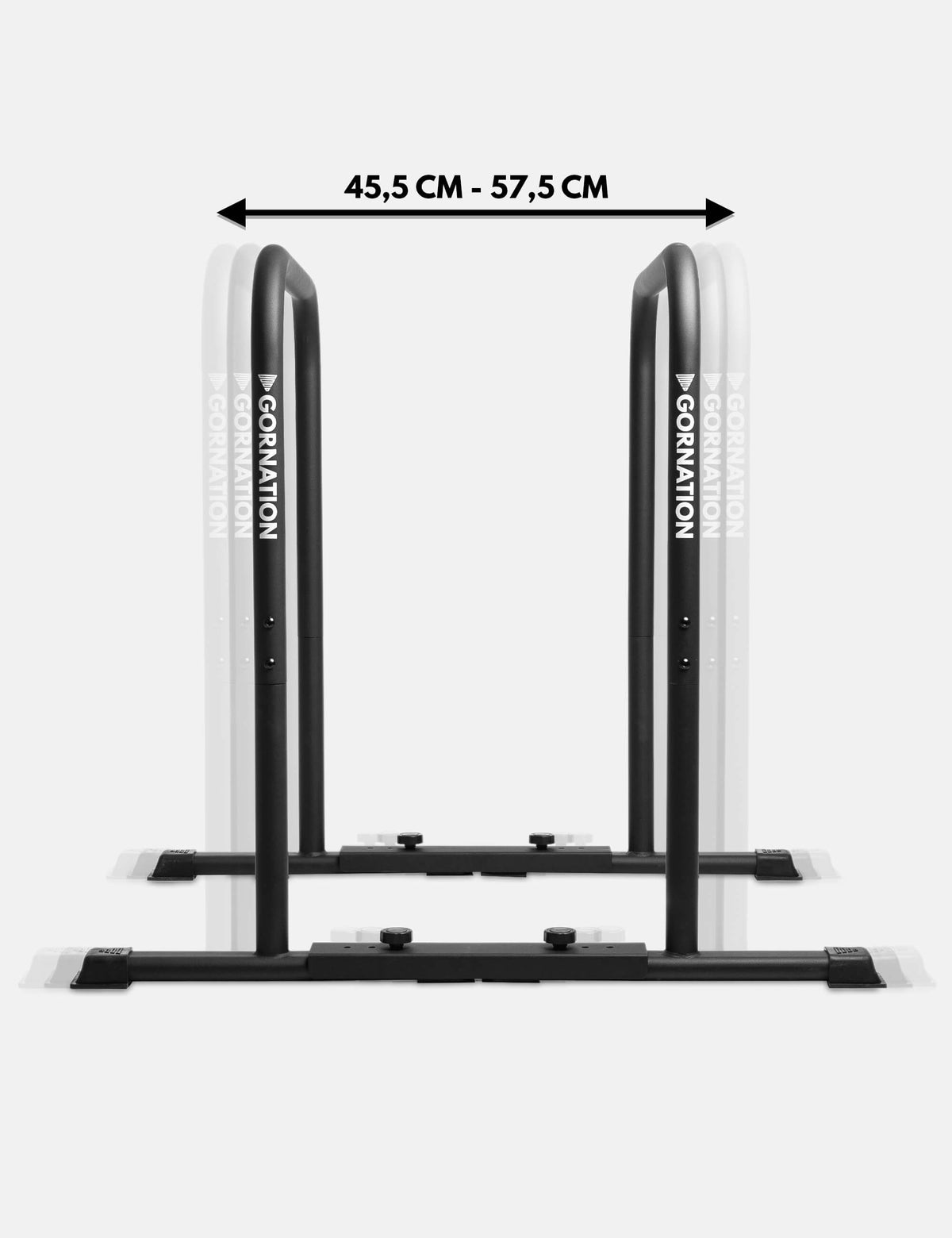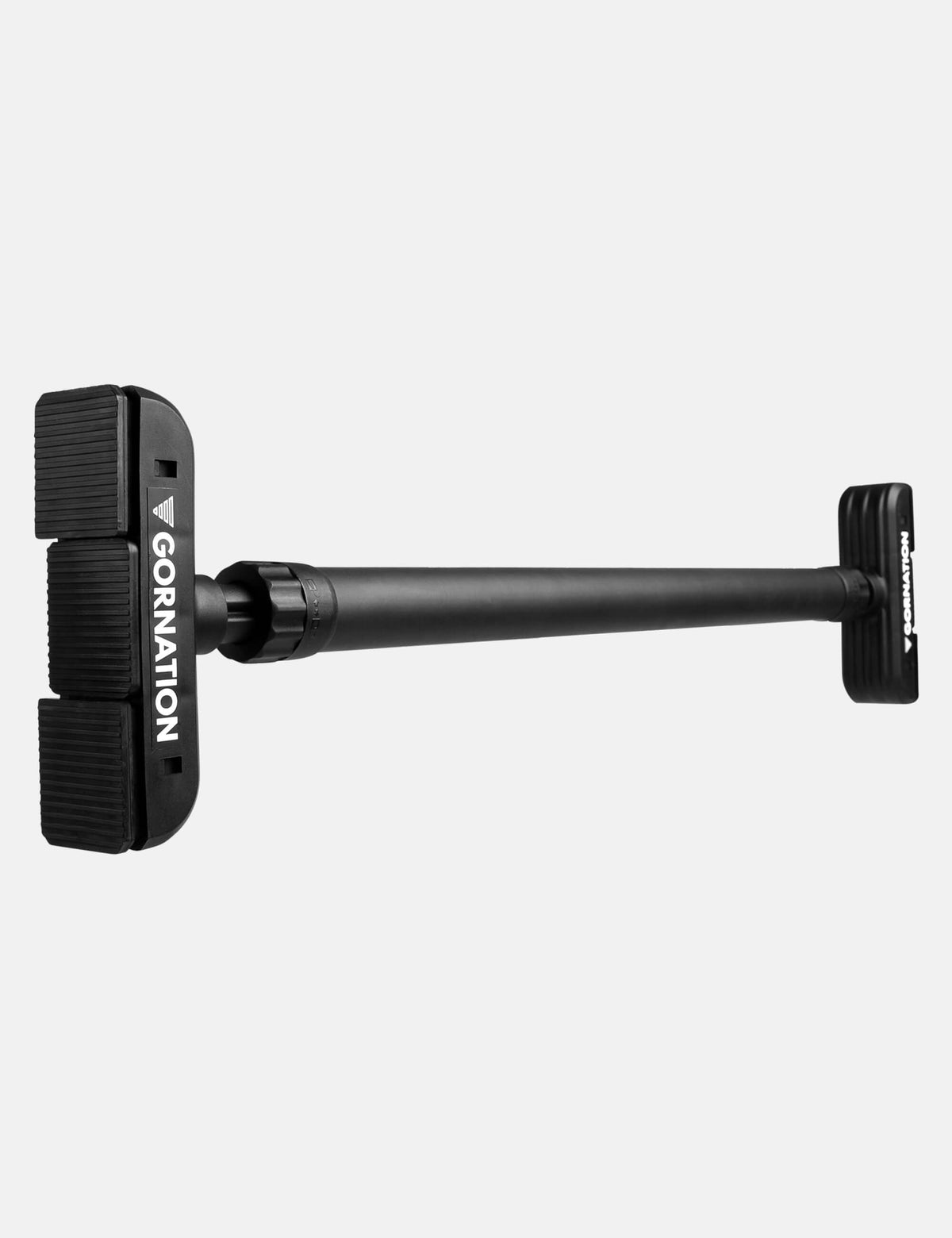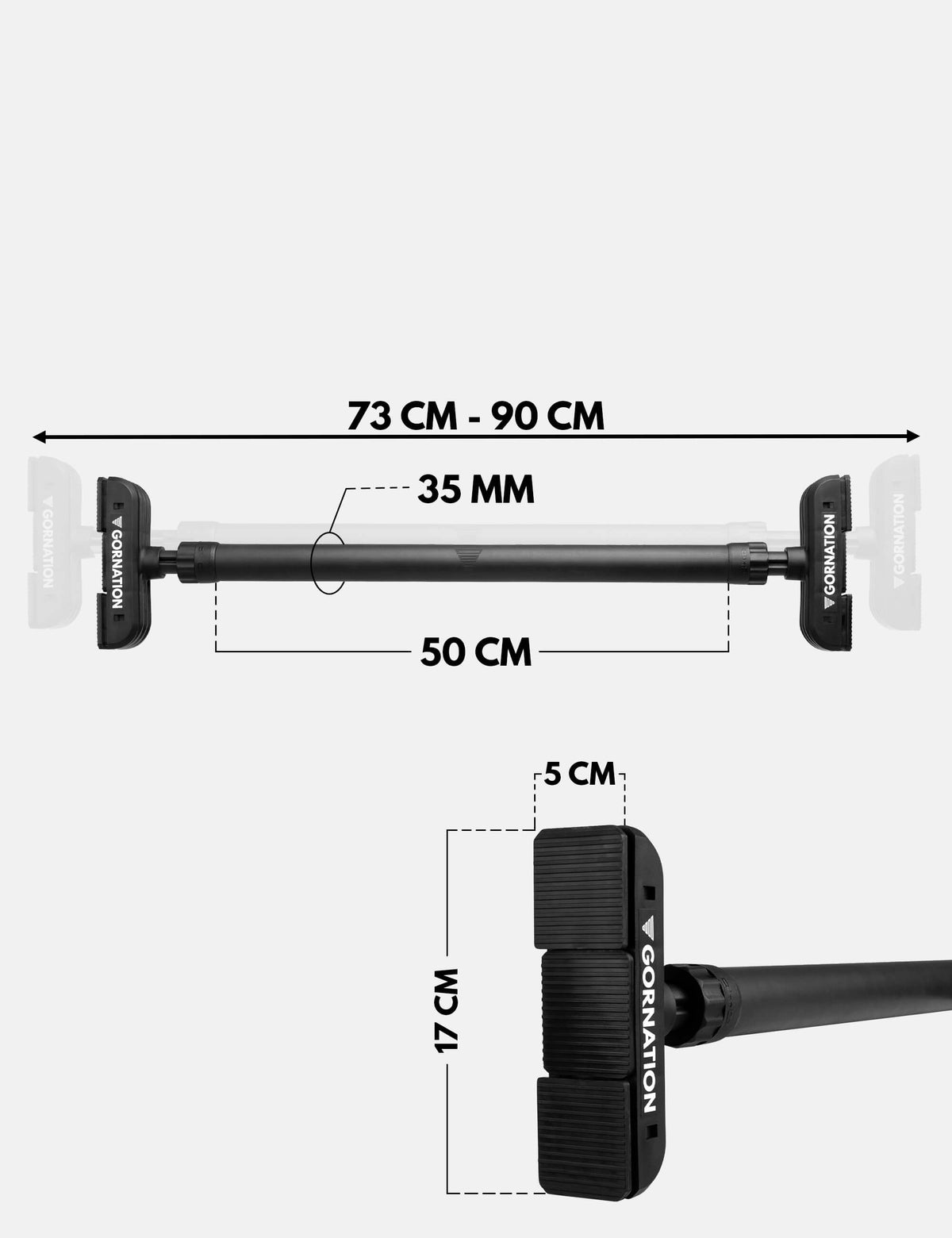How to do the exercise
The Pull Over is a calisthenics skill to build body control and transition into the starting position of the straight bar dip. It combines core strength, back engagement, and coordination. Here’s how to perform the Pull Over step by step:
1. Starting Position
Hang from a Pull Up Bar with an overhand grip, hands shoulder-width apart. Keep your body tight, legs extended, and core engaged. Look straight ahead and prepare for the initial movement.
2. Leg Raise & Back Engagement
Initiate the exercise by performing a controlled leg raise. As your feet approach bar height, actively engage your back muscles and maintain straight legs. This creates the momentum and strength needed for the transition.
3. Pulling the Hips Over
Once your feet are at bar level, pull your upper body towards the bar while driving your hips upward. The goal is to bring your hips over the bar in a smooth, controlled motion without excessive swinging.
4. Rotation Around the Bar
After your hips pass the bar, rotate your body around it by shifting your weight forward. Keep your core tight to avoid collapsing and smoothly transition into the support position on top of the bar.
5. Finish in Straight Bar Dip Position
End the movement with your arms extended and your body upright on top of the bar. Reset your core tension and repeat for the desired number of reps, focusing on clean execution.
Recommended Equipment for Pull Overs
Benefits of the exercise
The Pull Over is one of the best exercises for mastering bar control and building strength for advanced skills:
-
Improves core strength and total body coordination
-
Teaches hip drive and transition into the straight bar dip
-
Develops pulling and pushing strength in one smooth movement
-
Builds confidence for advanced skills like the muscle up
This makes it a valuable skill for beginners aiming for progression and for advanced athletes looking to refine technique and control on the bar.
Main muscles used
The Pull Over primarily targets:
-
Lats (Latissimus Dorsi)
-
Abdominals & Hip Flexors
-
Chest & Triceps
-
Shoulders & Core stabilizers
By practicing the Pull Over, you combine pulling, core, and pushing strength into one exercise, creating balanced muscle development.
If you're looking for other bar exercises, check out our Youtube video:
Mistakes to avoid
Common mistakes when performing the Pull Over include:
-
Bending the legs: Keep your legs straight to build proper core strength and technique.
-
Using excessive swing: Momentum reduces control. Focus on strength-driven movement.
-
Poor hip engagement: Driving the hips is essential to get over the bar efficiently.
-
Lack of core tension: A loose core leads to collapsing and loss of control.
-
Rushing the rotation: Rotate smoothly around the bar instead of throwing your body forward.
-
Weak wrist position: Keep wrists stable to avoid strain during the transition.
Progress gradually with assistance if needed, and always focus on clean, controlled repetitions to master the Pull Over safely and effectively.
Discover more Exercises
Looking for more ways to level up your training? Check out our full exercise overview or try these effective exercises that perfectly complement your training:
Please read our legal disclaimer before starting your workout.
 | 5.000+ Reviews
| 5.000+ Reviews
 Free EU Shipping above 100€*
Free EU Shipping above 100€*
 Worldwide Tracked Shipping
Worldwide Tracked Shipping






